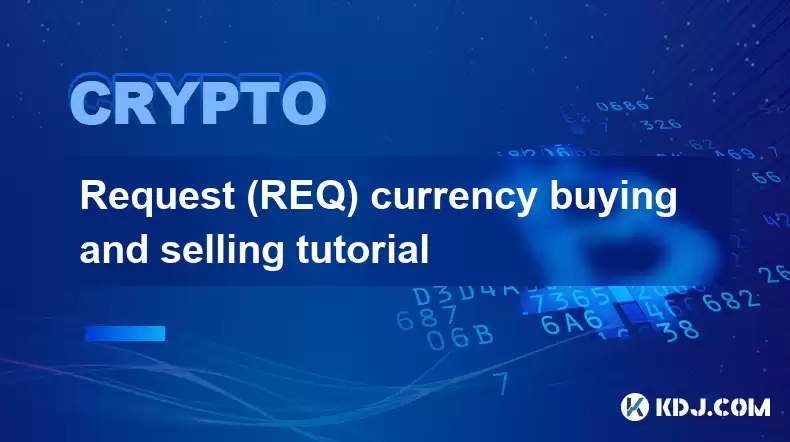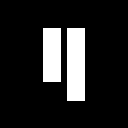-
 Bitcoin
Bitcoin $119900
1.12% -
 Ethereum
Ethereum $4599
9.32% -
 XRP
XRP $3.282
4.63% -
 Tether USDt
Tether USDt $0.9998
-0.02% -
 BNB
BNB $833.4
3.91% -
 Solana
Solana $193.3
10.47% -
 USDC
USDC $0.9999
-0.01% -
 Dogecoin
Dogecoin $0.2366
5.64% -
 TRON
TRON $0.3534
2.64% -
 Cardano
Cardano $0.8477
9.54% -
 Chainlink
Chainlink $23.33
10.42% -
 Hyperliquid
Hyperliquid $45.59
5.29% -
 Stellar
Stellar $0.4509
5.00% -
 Sui
Sui $3.888
6.46% -
 Bitcoin Cash
Bitcoin Cash $620.4
7.20% -
 Hedera
Hedera $0.2613
6.53% -
 Ethena USDe
Ethena USDe $1.001
0.01% -
 Avalanche
Avalanche $24.75
8.33% -
 Litecoin
Litecoin $130.2
8.10% -
 Toncoin
Toncoin $3.541
5.12% -
 UNUS SED LEO
UNUS SED LEO $9.079
1.11% -
 Shiba Inu
Shiba Inu $0.00001367
5.60% -
 Uniswap
Uniswap $11.55
4.73% -
 Polkadot
Polkadot $4.181
8.43% -
 Cronos
Cronos $0.1664
0.63% -
 Dai
Dai $0.9998
-0.03% -
 Ethena
Ethena $0.7980
2.17% -
 Pepe
Pepe $0.00001225
8.94% -
 Bitget Token
Bitget Token $4.452
1.25% -
 Aave
Aave $317.1
8.17%
Request (REQ) currency buying and selling tutorial
Request Network's decentralized REQ currency offers secure and cost-effective online transactions due to its Ethereum blockchain foundation.
Dec 25, 2024 at 06:46 pm

Request (REQ) Currency Buying and Selling Tutorial
The Request (REQ) currency is a decentralized, open-source cryptocurrency that allows users to make payments for goods and services online. REQ is designed to be fast, secure, and affordable, making it an ideal choice for everyday transactions.
Key Points
- Where to buy and sell REQ
- How to buy REQ
- How to sell REQ
- What are the fees
- What are the limits
- What are the risks
Where to Buy and Sell REQ
There are a number of different exchanges where you can buy and sell REQ. Some of the most popular exchanges include:
- Binance
- Coinbase
- Kraken
- KuCoin
- Uniswap
It is important to compare the fees, limits, and risks of each exchange before selecting one.
How to Buy REQ
- Create an account on an exchange
- Deposit funds into your account
- Place a buy order for REQ
To create an account on an exchange, you will need to provide your name, email address, and password. You may also need to verify your identity by providing a government-issued ID.
To deposit funds into your account, you can use a bank transfer, credit card, or debit card. The specific methods available will vary depending on the exchange.
To place a buy order for REQ, you will need to specify the amount of REQ you want to buy and the price you are willing to pay. You can place a market order, which will buy REQ at the current market price, or a limit order, which will only buy REQ at the specified price or better.
How to Sell REQ
- Create an account on an exchange
- Deposit REQ into your account
- Place a sell order for REQ
To create an account on an exchange, you will need to provide your name, email address, and password. You may also need to verify your identity by providing a government-issued ID.
To deposit REQ into your account, you will need to copy the deposit address from the exchange and send REQ from you wallet to the address.
To place a sell order for REQ, you will need to specify the amount of REQ you want to sell and the price you are willing to sell it for. You can place a market order, which will sell REQ at the current market price, or a limit order, which will only sell REQ at the specified price or better.
What are the Fees
The fees for buying and selling REQ will vary depending on the exchange. However, most exchanges will charge a small fee for both buying and selling. The fee is typically a percentage of the transaction amount.
What are the Limits
The limits for buying and selling REQ will also vary depending on the exchange. However, most exchanges will have a minimum and maximum amount of REQ that you can buy or sell.
What are the Risks
There are a number of risks associated with buying and selling REQ. These risks include:
- Volatility: The price of REQ can fluctuate significantly, which means you could lose money if the price drops.
- Security: Exchanges can be hacked, which could result in your REQ being stolen.
- Regulation: The regulatory landscape for cryptocurrency is constantly evolving, which could impact the value of REQ.
FAQs
What is Request (REQ)?
Request (REQ) is a decentralized, open-source cryptocurrency that allows users to make payments for goods and services online. REQ is designed to be fast, secure, and affordable, making it an ideal choice for everyday transactions.
How does Request (REQ) work?
Request (REQ) is built on the Ethereum blockchain. This means that it is a decentralized cryptocurrency, which means it is not controlled by any single entity. Instead, REQ is controlled by a network of computers, which prevents it from being hacked or manipulated.
What are the benefits of using Request (REQ)?
There are a number of benefits to using Request (REQ), including:
- Fast: REQ transactions are processed quickly, typically within a few seconds.
- Secure: REQ is built on the Ethereum blockchain, which is one of the most secure blockchain networks in the world.
- Affordable: REQ transactions are typically very affordable, with fees typically being less than $1.
What are the risks of using Request (REQ)?
There are a number of risks associated with using REQ, including:
- Volatility: The price of REQ can fluctuate significantly, which means you could lose money if the price drops.
- Security: Exchanges can be hacked, which could result in your REQ being stolen.
- Regulation: The regulatory landscape for cryptocurrency is constantly evolving, which could impact the value of REQ.
Disclaimer:info@kdj.com
The information provided is not trading advice. kdj.com does not assume any responsibility for any investments made based on the information provided in this article. Cryptocurrencies are highly volatile and it is highly recommended that you invest with caution after thorough research!
If you believe that the content used on this website infringes your copyright, please contact us immediately (info@kdj.com) and we will delete it promptly.
- Unich's OTC Exchange: Surging with $1.2B Volume – What's the Hype?
- 2025-08-13 02:50:11
- MoonBull's Explosive Moves: Your Crypto Whitelist Ticket to Ride!
- 2025-08-13 02:30:11
- MAGACOIN Finance: Don't Miss the Presale Bonus!
- 2025-08-13 02:30:11
- Trump's Crypto Kingdom: $2.4 Billion and Counting
- 2025-08-13 02:50:11
- Solana, LSTs, and SEC Approval: A New Dawn for Crypto?
- 2025-08-13 02:55:12
- Bitcoin's Profit Surge: Unpacking the BTC Value Boom
- 2025-08-13 02:55:12
Related knowledge

How to purchase Aragon (ANT)?
Aug 09,2025 at 11:56pm
Understanding Aragon (ANT) and Its PurposeAragon (ANT) is a decentralized governance token that powers the Aragon Network, a platform built on the Eth...

Where to trade Band Protocol (BAND)?
Aug 10,2025 at 11:36pm
Understanding the Role of Private Keys in Cryptocurrency WalletsIn the world of cryptocurrency, a private key is one of the most critical components o...

What is the most secure way to buy Ocean Protocol (OCEAN)?
Aug 10,2025 at 01:01pm
Understanding Ocean Protocol (OCEAN) and Its EcosystemOcean Protocol (OCEAN) is a decentralized data exchange platform built on blockchain technology,...

How to invest in Kyber Network Crystal v2 (KNC)?
Aug 12,2025 at 05:21pm
Understanding Kyber Network Crystal v2 (KNC)Kyber Network is a decentralized liquidity hub built on the Ethereum blockchain that enables instant token...

Where can I buy UMA (UMA)?
Aug 07,2025 at 06:42pm
Understanding UMA and Its Role in Decentralized FinanceUMA (Universal Market Access) is an Ethereum-based decentralized finance (DeFi) protocol design...

What exchanges offer Gnosis (GNO)?
Aug 12,2025 at 12:42pm
Overview of Gnosis (GNO) and Its Role in the Crypto EcosystemGnosis (GNO) is a decentralized prediction market platform built on the Ethereum blockcha...

How to purchase Aragon (ANT)?
Aug 09,2025 at 11:56pm
Understanding Aragon (ANT) and Its PurposeAragon (ANT) is a decentralized governance token that powers the Aragon Network, a platform built on the Eth...

Where to trade Band Protocol (BAND)?
Aug 10,2025 at 11:36pm
Understanding the Role of Private Keys in Cryptocurrency WalletsIn the world of cryptocurrency, a private key is one of the most critical components o...

What is the most secure way to buy Ocean Protocol (OCEAN)?
Aug 10,2025 at 01:01pm
Understanding Ocean Protocol (OCEAN) and Its EcosystemOcean Protocol (OCEAN) is a decentralized data exchange platform built on blockchain technology,...

How to invest in Kyber Network Crystal v2 (KNC)?
Aug 12,2025 at 05:21pm
Understanding Kyber Network Crystal v2 (KNC)Kyber Network is a decentralized liquidity hub built on the Ethereum blockchain that enables instant token...

Where can I buy UMA (UMA)?
Aug 07,2025 at 06:42pm
Understanding UMA and Its Role in Decentralized FinanceUMA (Universal Market Access) is an Ethereum-based decentralized finance (DeFi) protocol design...

What exchanges offer Gnosis (GNO)?
Aug 12,2025 at 12:42pm
Overview of Gnosis (GNO) and Its Role in the Crypto EcosystemGnosis (GNO) is a decentralized prediction market platform built on the Ethereum blockcha...
See all articles

























































































